#River Cane
Explore tagged Tumblr posts
Text
You know, I wonder how much more effective it would be to try to reestablish the cane brakes that used to be all over SE USA. It's American bamboo, it grows quickly, and is excellent at converting CO2.
"A century of gradual reforestation across the American East and Southeast has kept the region cooler than it otherwise would have become, a new study shows.
The pioneering study of progress shows how the last 25 years of accelerated reforestation around the world might significantly pay off in the second half of the 21st century.
Using a variety of calculative methods and estimations based on satellite and temperature data from weather stations, the authors determined that forests in the eastern United States cool the land surface by 1.8 – 3.6°F annually compared to nearby grasslands and croplands, with the strongest effect seen in summer, when cooling amounts to 3.6 – 9°F.
The younger the forest, the more this cooling effect was detected, with forest trees between 20 and 40 years old offering the coolest temperatures underneath.
“The reforestation has been remarkable and we have shown this has translated into the surrounding air temperature,” Mallory Barnes, an environmental scientist at Indiana University who led the research, told The Guardian.
“Moving forward, we need to think about tree planting not just as a way to absorb carbon dioxide but also the cooling effects in adapting for climate change, to help cities be resilient against these very hot temperatures.”
The cooling of the land surface affected the air near ground level as well, with a stepwise reduction in heat linked to reductions in near-surface air temps.
“Analyses of historical land cover and air temperature trends showed that the cooling benefits of reforestation extend across the landscape,” the authors write. “Locations surrounded by reforestation were up to 1.8°F cooler than neighboring locations that did not undergo land cover change, and areas dominated by regrowing forests were associated with cooling temperature trends in much of the Eastern United States.”
By the 1930s, forest cover loss in the eastern states like the Carolinas and Mississippi had stopped, as the descendants of European settlers moved in greater and greater numbers into cities and marginal agricultural land was abandoned.
The Civilian Conservation Corps undertook large replanting efforts of forests that had been cleared, and this is believed to be what is causing the lower average temperatures observed in the study data.
However, the authors note that other causes, like more sophisticated crop irrigation and increases in airborne pollutants that block incoming sunlight, may have also contributed to the lowering of temperatures over time. They also note that tree planting might not always produce this effect, such as in the boreal zone where increases in trees are linked with increases in humidity that way raise average temperatures."
-via Good News Network, February 20, 2024
#science side of tumblr#where are you?#thoughts on this?#canebrakes#river cane#ecosystem restoration#ecology#conservation
14K notes
·
View notes
Text
so i'm going to have to move like 60 rivercanes indoors for the hard frost coming since i don't have time to put them all in bigger pots and pile mulch around them and everything
i must say. i was not expecting to end up with 150+ river cane seedlings. I would have been fucking thrilled to have even two
they need repotted ASAP because they are growing rhizomes outwards to try to spread and hitting the sides of the pots, a bunch of them are growing additional stems as tall as the original stem at the very edges of their pots because they wanna Expand
683 notes
·
View notes
Text
Cane/Bamboo Adventures Part 1/?
So we just moved into a new house and there's this huge thing in the very back of the yard along a creek that I thought was bamboo, then I thought it was cane, and then after checking as many cane ID posts and videos I could find, I'm still completely unsure. My friend who's a wildlife student says it doesn't look like bamboo to her, but we both agree it doesn't look like the cane we've seen around South Georgia. She said it must be Arundinaria gigantea because no other cane gets this large, but all the cane we've seen identified as A. gigantea doesn't look like this. Here's my notes and some pics.
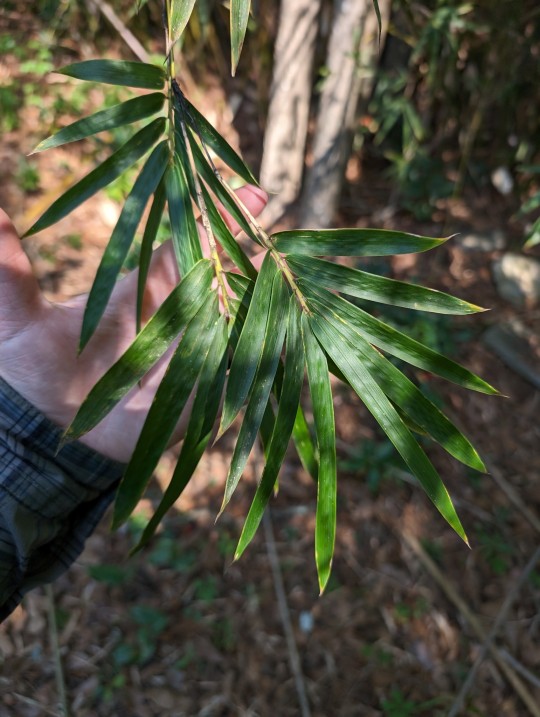
First, the leaves are much smaller than cane I've seen around here. Even very small, young cane around here has leaves about the length of my forearm.
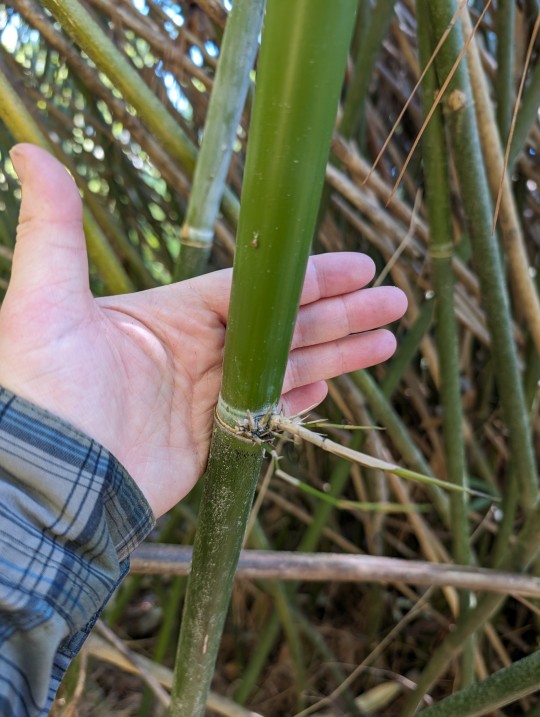

Second, a couple things online I found distinguishing bamboo from cane say that new bamboo branches grow outward, while cane grows more upward. However there seems to be both upward and outward shoots on this bunch (examples of both pictured above). Also worth noting, the picture above on the left is the biggest diameter branch I found. I have relatively small hands for context (I wear small-medium sized gloves).
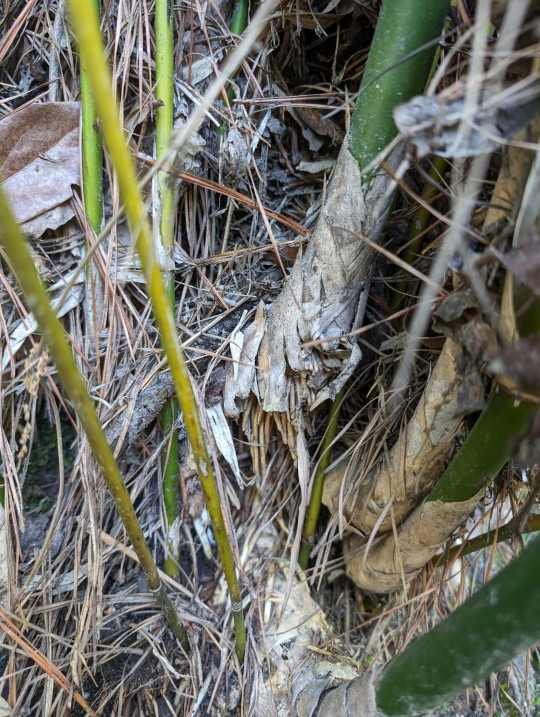

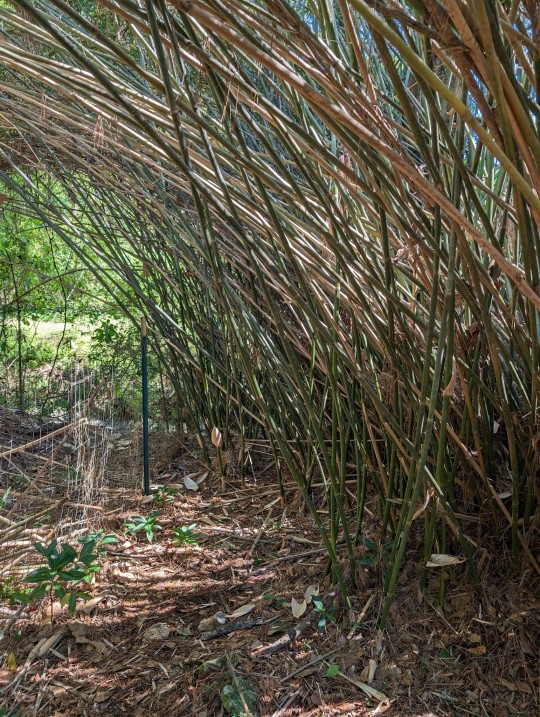
Then here's just some more pictures. I crawled down into a creek for the root picture (left)(a steep 7 foot drop haha). The middle picture is the youngest bunch I found, again it doesn't resemble cane I've seen around here. The picture on the right is a further away picture after I cleared some dead branches.
Also worth noting, this is tucked behind a house, between a fence, a creek, and like 3 trees. So it doesn't have a ton of space to grow, and I'm guessing that's why it's so dense.
If anyone happens to know anything about this please let me know! A week or so ago I emailed a guy from NC State and uploaded it on inaturalist, but I haven't received any replies or ID 😭
#I'm working on clearing out all the dead branches currently to give it more space#native plants#bamboo#cane#river cane#plant identification#plant ID#arundinaria gigantea#?#solarpunk
289 notes
·
View notes
Text
"
It started with a few sentences in a book I was reading about the history of the Appalachian Mountains. The book briefly discussed Kentucky, before colonization, being covered with dense thickets called canebrakes, which mostly disappeared when settlers plowed and cleared the fertile bottomlands where they grew. “Cane,” the book claimed, was likely the origin of the name Kentucky—“Kain-tuck.”
“Cane” was just what the settlers called the tall, woody plant that dominated in canebrakes—the name refers to any of the three similar plant species belonging to the genus Arundinaria. In Kentucky, it was most likely A. gigantea, or giant river cane. Giant river cane has no relationship to plants like sugar cane, and are actually North America’s only native bamboo.
Bamboo? In Kentucky?
I recalled having seen some strangely bamboo-like plants in the area, including a large patch in an empty lot close to my house. My memory rushed back to several years ago, when my brother had been camping in a “bamboo forest” along a creek that bordered a farm. How strange, I had thought. Who would plant bamboo in the middle of nowhere like that?
Unless…it was native bamboo?"
3 notes
·
View notes
Text
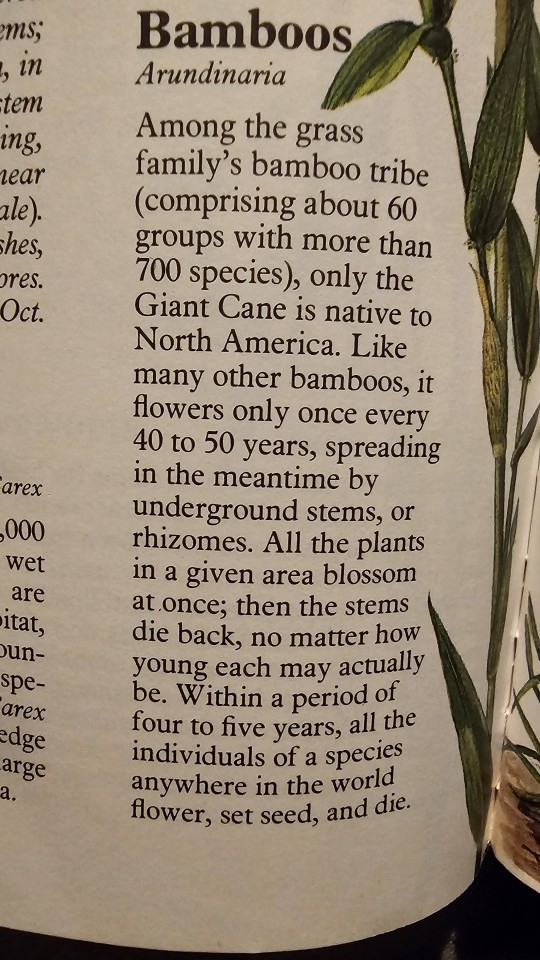
You're telling me all bamboo species have their own globally synchronized periods?
(Source is a 1982 copy of Readers Digest North American Wildlife)
2 notes
·
View notes
Text
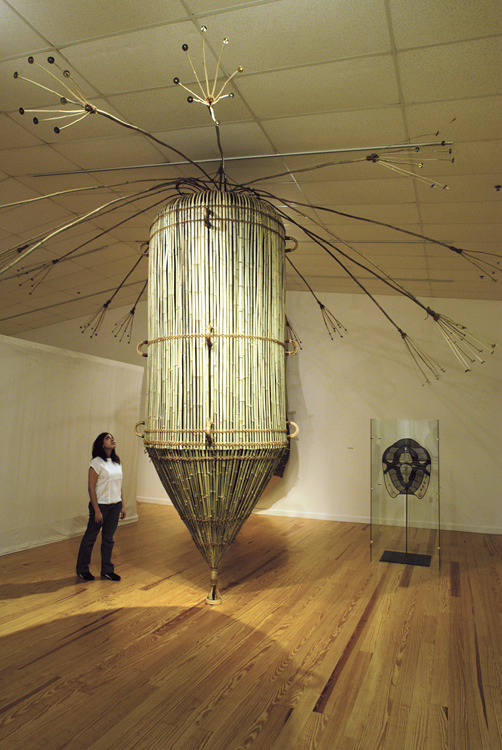
#intermediate sculpture#mel chin#Our Strange Flower of Democracy 2005#bamboo#river cane#burlap#coir#mahogany#steel#bottle caps 15x18
4 notes
·
View notes
Text


Nice patch of (what I think is) river cane, some was about a foot or so taller that me (so it was probably 6-6 1/2 ft tall in total)
0 notes
Text
River Cane

https://forestryoutreach.berea.edu/rediscovering-north-americas-lost-biome/
:

:
1 note
·
View note
Text

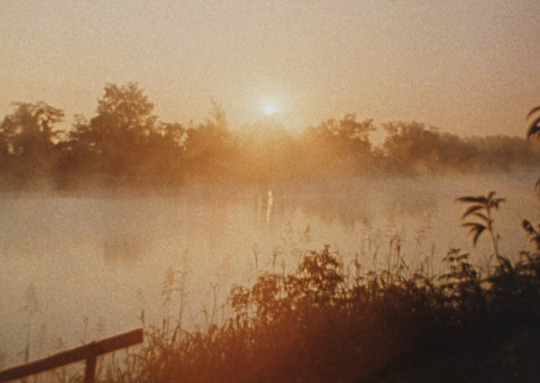
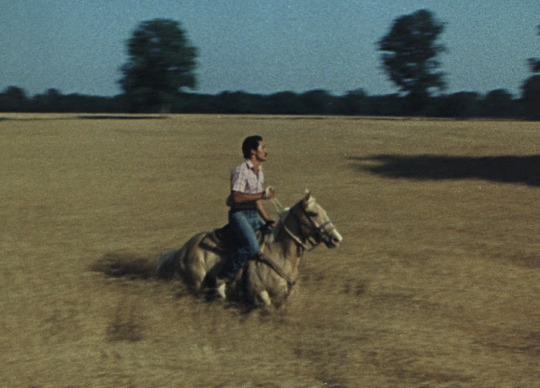


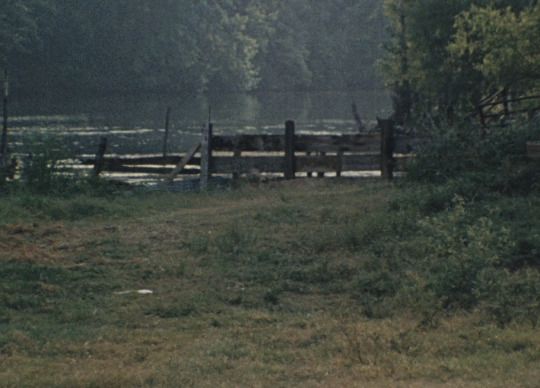
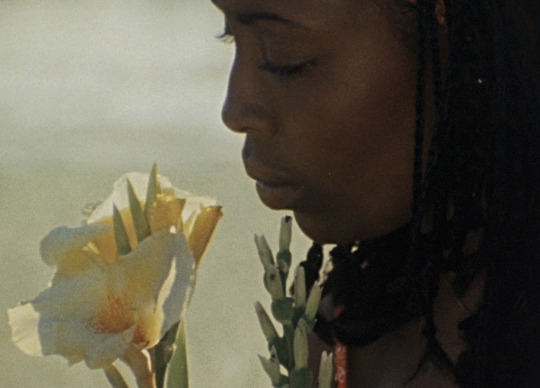
Cane River (1982) // dir. Horace B. Jenkins
319 notes
·
View notes
Text
so i got a cane today, because my leg just does not work correctly sometimes, Im actually crimson river james potter??
45 notes
·
View notes
Text

From The Cane Groves of Narmada River, a book of Sanskrit erotic poetry translated and introduced by Andrew Schelling.
#andrew schelling#the cane groves of narmada river#poetry#feb24#integral#yes. that kind of nectar. she said what she said we are Cheering
91 notes
·
View notes
Text
MORE SLOW HORSES/THE MAGNUS ARCHIVES!!!!
lol, none of these swaps r final, just wanted to put them in situations. if I do end up writing/drawing a fic, it will most likely not follow each media’s storylines, btw



(I don’t ship river and louisa the scene just feels like something they would do)



(Nikola is meant to be Tearney )
stay tuned for more !
#garg draws#YES Gertrude is Lamb#i am correct#slow horses#the magnus archives#tma#jonathan sims#gertrude robinson#sid baker#melanie king#river cartwright#louisa guy#annabelle cane#nikola orsinov#my beloved#slow horses fanart#tma fanart
26 notes
·
View notes
Text
listen one of the major reasons i care so much about Arundinaria is that she's gotta be legit the most exciting rising star in the evolutionary world.
Flowering plants emerge like 100mil years ago, proceed to become the baddest bitches on planet earth with hundreds of thousands of species found in every environment.
from this lineage emerges the GRASS which, using the simple technologies of "Grow leafs from the bottom so the tops can get eaten and you can just keep a-goin'" and "Not die when stepped on" become the undisputed masters of the sunny and arid regions
From the lineage of the GRASSES. Emerges a grass that decides to step up its game and invent WOOD to become some sort of fucked up tree. This grass is known as WOODY BAMBOO and it kicks everybody's ass.
The woody bamboo is mostly thriving in Asia, but around 2mil years ago, a bamboo got LOST AS FUCK and accidentally went to NORTH AMERICA. It turns out the south-eastern part of North America is a downright luxurious climate for a bamboo and so the bamboo actually evolved into its own genus.
However, there was an ICE AGE that froze a bunch of North America and the bamboo was forced to a tiny edge of the Gulf Coast. Fortunately, the bamboo made a mutualistic symbiosis with HUMANS, which used controlled burning to create its ideal habitats in exchange for using the stems for a super-strong, versatile, flexible, water resistant material for literally everything. So basically it spread all throughout the Southeast of North America and formed its own habitat type, a bamboo forest environment known as a CANEBRAKE.
It's native North American bamboo, y'all. It's been reduced to 2% of its former extent and a lot of people don't even know it exists.
This plant is going places we can't let this shining streak of weird-ass plants with ideas just strange enough to work collapse because of a freak colonialism incident
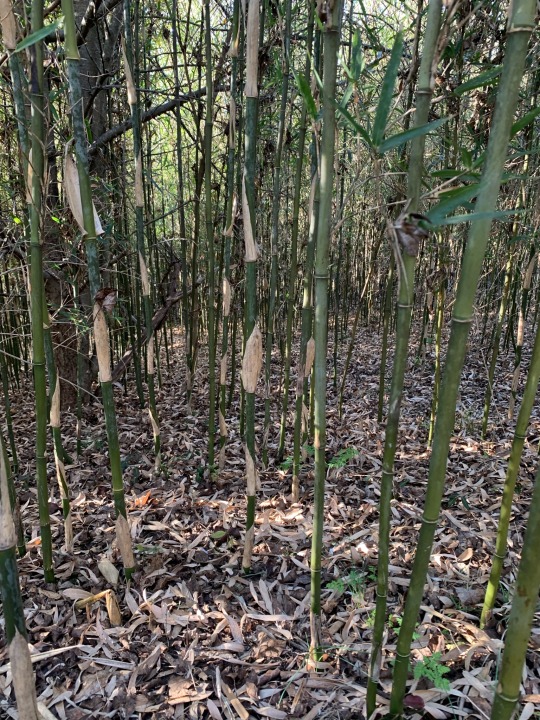
Arundinaria gigantea my absolute beloved
2K notes
·
View notes
Text
Rivercane/Creek Adventures part 2/?
I'm still not 100% sure if this is native cane or not, but either way I started clearing out dead stalks that I could access. It's looking a lot more green now, it used to be about half yellow visually. First two pics are cane I cut/pulled out, second two pics are the patch of cane.




I also went down into the creek next to it. As far as I can tell this isn't a named creek and when I followed it on Google maps it seems to vanish within like 3 miles. Either way I'm going to try to keep it clean. I went down and cleared out 2 grocery bags worth of trash, but I can't access any more without some water boots.



Also there's these holes along the bottom of the creek. I wonder what animal they're from? When it rains a lot they get covered by water.


190 notes
·
View notes
Text
Thank you! Looking at some of the links, what I've found may not be native, alas. I'll see if I can get it identified and then notify the appropriate people.
Where's that Native North American Canebreak/Bamboo post?
I was walking Pip near work the other day and spotted this, which I recalled using as a kid to make panpipes of a sort, and wondered if it was one of the North American native canebreak/bamboo species people get excited about:

I've walked that path before during this time of year and this is the first time I've spotted it this thickly -- previously, it was just the occasional plant.
11 notes
·
View notes
Photo
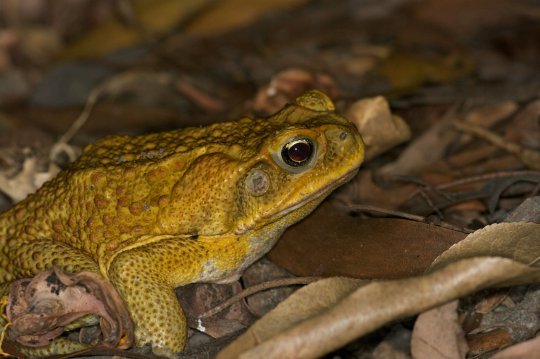
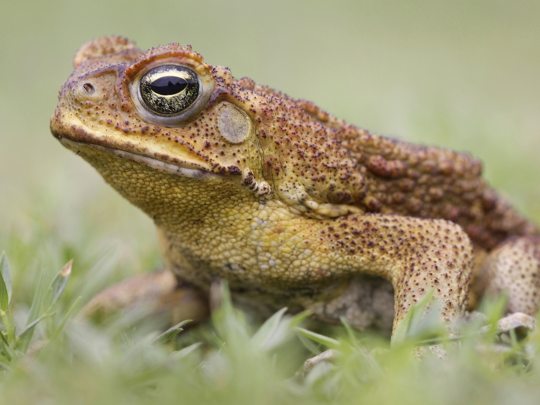

Caring for the Cane Toad
Also known as the giant neotropical toad or marine toad, the cane toad (Rhinella marina) is a large species of toad native to Central and South America. They are most often found near permanent sources of water like lakes, wetlands, and slow-moving rivers, as well as tropical rainforests and open grasslands. R. marina can also be found in human-modified areas, like gardens and farmland. They have a wide range of temperatures which they can tolerate; some populations in North America can tolerate up to 53% of their bodily fluids freezing.
Despite their preference for living near water, cane toads are primarily terrestrial. They feed on a wide range of arthropods, birds, small reptiles, and small mammals-- anything they can fit in their mouths. Prey is mainly identified via movement and smell, as R. marina has poor vision and hunts at primarily night. During the day the marine toad hides under logs or in foliage to avoid predators. The most common threats in its native region include caimans, birds of prey, snakes, eels, large fish, and bullet ants. To deter these predators, the cane toad can emit a milky-white substance known as bufotoxin, which is poisonous to many species. Individuals will also inflate their lungs, puffing up their bodies to appear larger than they really are.
R. marina is easily identified as the largest species in the family Bufonidae, reaching up to 24 cm (9.5 in) long and weighing an average of 106g(3.75 oz). Females are significantly larger than males. On adults, the head and back are covered with large wart-like bumps, and the color ranges from light grey to red to dark brown. Juveniles have smooth skin and are usually darker in color. Because of their terrestrial nature, marine toads lack webbing between their fingers.
The giant neotropical toad is capable of breeding year-round, so long as resources are plentiful. Males congregate in bodies of slow-moving or still freshwater, and call loudly to attract a mate. Depending on the number of males and the size of their breeding ground, males may also fight for dominance. After a female choses a mate (or several), she may lay up to 25,000 eggs in strings up to 20m (65 ft) long. The eggs take only 2-7 days to hatch, but few make it past the tadpole stage, which lasts about a month. Only about 0.5% of cane toads reach adulthood, which takes about a year. Without predators R. marina can live up to 10 years.
Conservation status: The IUCN lists the cane toad as Least Concern, due to their large native population and adaptability. Unfortunately, the cane toad has been introduced in many areas, including Australia, southeast Asia, the Caribbean, and North America, and is considered a highly invasive species.
If you like what I do, consider leaving a tip or buying me a kofi!
Photos
Chris Ison
John Sullivan
Richard Shine
#cane toad#Anura#Bufonidae#south american toads#true toads#toads#amphibians#wetlands#wetland amphibians#freshwater fauna#freshwater amphibians#lakes#lake amphibians#rivers#river amphibians#tropical forests#tropical forest amphibians#urban fauna#urban amphibians#central america#south america#biology#zoology#animal facts
220 notes
·
View notes